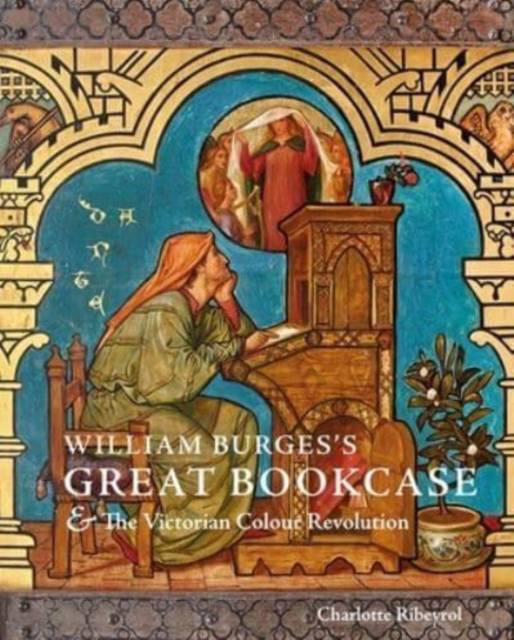
Door een staking bij bpost kan je online bestelling op dit moment iets langer onderweg zijn dan voorzien. Dringend iets nodig? Onze winkels ontvangen jou met open armen!
- Afhalen na 1 uur in een winkel met voorraad
- Gratis thuislevering in België vanaf € 30
- Ruim aanbod met 7 miljoen producten
Door een staking bij bpost kan je online bestelling op dit moment iets langer onderweg zijn dan voorzien. Dringend iets nodig? Onze winkels ontvangen jou met open armen!
- Afhalen na 1 uur in een winkel met voorraad
- Gratis thuislevering in België vanaf € 30
- Ruim aanbod met 7 miljoen producten
Zoeken
William Burges's Great Bookcase and the Victorian Colour Revolution
Charlotte Ribeyrol
Hardcover | Engels
€ 54,45
+ 108 punten
Omschrijving
Charlotte Ribeyrol presents a fascinating (book)case study exploring the story of an extraordinary object, William Burges's (1827-1881) Great Bookcase. No fewer than 13 major artists, including Edward Burne-Jones, Edward Poynter, and Albert Moore, took part in the painting of this unique piece of furniture, which has now returned to the Ashmolean Museum after an absence of over 80 years. Ribeyrol throws new light on the chromophilia of the "Pre-Raphaelite" architect William Burges and his key role in shaping aesthetic debates about color in the 1860s. This crucial decade, which saw the advent of the first synthetic dyes, transformed the experience of color for many painters and poets in Burges's circle. Interweaving art, literature, and chemistry, Ribeyrol reads the eight painted panels of the Great Bookcase in the context of this 'color revolution', which brought to the fore new approaches to color while simultaneously triggering a revival of the polychromy of the Pagan and Christian past. Drawing on pioneering interdisciplinary research and featuring new photography throughout, this book provides a definitive account of one of Burges's most cherished and complex artworks.
Specificaties
Betrokkenen
- Auteur(s):
- Uitgeverij:
Inhoud
- Aantal bladzijden:
- 240
- Taal:
- Engels
Eigenschappen
- Productcode (EAN):
- 9780300267976
- Verschijningsdatum:
- 13/06/2023
- Uitvoering:
- Hardcover
- Formaat:
- Genaaid
- Afmetingen:
- 218 mm x 276 mm
- Gewicht:
- 1315 g

Alleen bij Standaard Boekhandel
+ 108 punten op je klantenkaart van Standaard Boekhandel
Beoordelingen
We publiceren alleen reviews die voldoen aan de voorwaarden voor reviews. Bekijk onze voorwaarden voor reviews.











